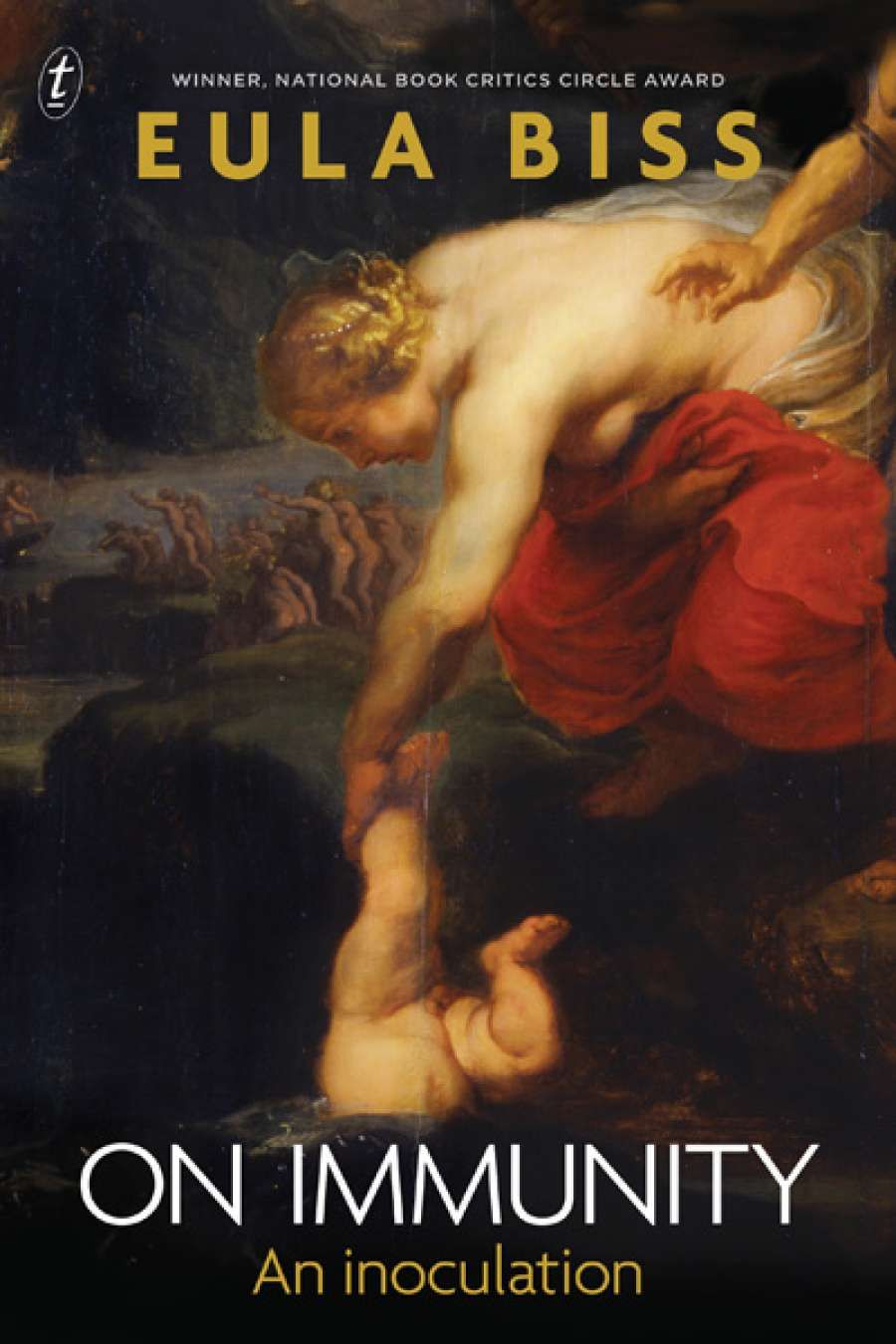
- Free Article: No
- Contents Category: Biology
- Custom Article Title: Ian Gibbins reviews 'On Immunity' by Eula Biss
- Book 1 Title: On Immunity
- Book 1 Subtitle: An Inoculation
- Book 1 Biblio: Text Publishing, $29.99 pb, 205 pp, 9781922182944
The daughter of a doctor but neither medically nor scientifically trained herself, Biss became motivated to investigate the so-called ‘vaccination debate’ when she gave birth to her first child. Should she vaccinate him, inoculate him against the diseases that could potentially kill him? Or was there such risk associated with the procedure that she was better off leaving his growing body to its own defensive mechanisms?
Biss introduces her quest via three apposite examples: the classical myth of Achilles and his heel, the unprotected site of his fatal vulnerability; the 2009 H1N1 influenza (‘swine flu’) pandemic as it swept across the United States; and, unexpectedly, Bram Stoker’s Dracula (1897), which she suggests not only reflects some primeval distaste for the transfer of bodily fluids, but is ‘as much about ... the problem of evidence and truth, as it is about vampires’. All three images generate recurrent themes amongst the eclectic mix filling this intriguing book. Early on, Biss unravels the broader cultural significance of key headline words and their origins: ‘vaccination’ (vacca, Latin for ‘cow’ signifying the link Edward Jenner found between smallpox and cowpox); ‘inoculation’ (from Latin, meaning to ‘set eyes’ or buds, a metaphor for grafting); and ‘immunisation’ (meaning ‘exempt from service’ and by extension, ‘not vulnerable’). Again, these observations become anchor points for diversifying topics of discussion throughout the book.
‘Remarkably, one of the greatest advances in public health and preventative medicine occurred well before the biological basis of immunity was known’
Amongst the cultural and historical framing of her investigation, Biss dedicates much space to explain both the contemporary science of modern immunology and the arguments mounted by the anti-vaccination lobby. Particularly valuable in this context, she quotes sources from the technical literature as well as popular articles and interviews with various protagonists. This helps bridge the inevitable distance between widely accepted and permanently available information in the professional research literature, and the generally more ephemeral world of press reports, television interviews, and online blogs. In doing so, Biss picks up on the metaphors built into the technical language of immunology: descriptions of the immune system include ‘memory, recognition, individuality, reading ... self, non-self’ along with military allusions whereby the body ultimately employs ‘natural killer cells’ to ‘fight invaders’. The implied violence of such metaphors is rejected by many practitioners of alternative medicine and scientists alike in favour of an overall concept of proper ‘balance and harmony’ in a well-functioning body.
‘Why, then, is there a perception in some quarters of the public that immunisation is somehow harmful, a dangerous procedure to be actively resisted?’
As Biss weaves through the science, anti-science, and social context enveloping them, the personal relevance of her quest is never far from view. Key elements of her story recall her son’s birth and pre-school years, interspersed with re-collections of her father’s medical practice. So there is much relief when she concludes that vaccination is essential for maintaining the broader health of the community. After giving ample voice to the opponents of vaccination, she strips bare the misinformation and fallacies underlying their claims. Critically, she emphasises that the decision not to immunise a child can only have good outcomes when dissenting parents have the privilege of living in a community where most other members have already been vaccinated and the risks of disease transmission are correspondingly reduced.
This important book is highly recommended for anyone interested in how vaccination works, its history and current debates. The text is well supported with notes and references, although an index would have been helpful. It is a remarkably easy read. Perhaps arising from Biss’s background as an essayist, each chapter is only a few pages long and largely self-contained. Thus, On Immunity richly rewards a casual dip and, indeed, can be sampled in almost any order to experience the beguiling, life-saving world of the immune system and all that surrounds it.


Comments powered by CComment